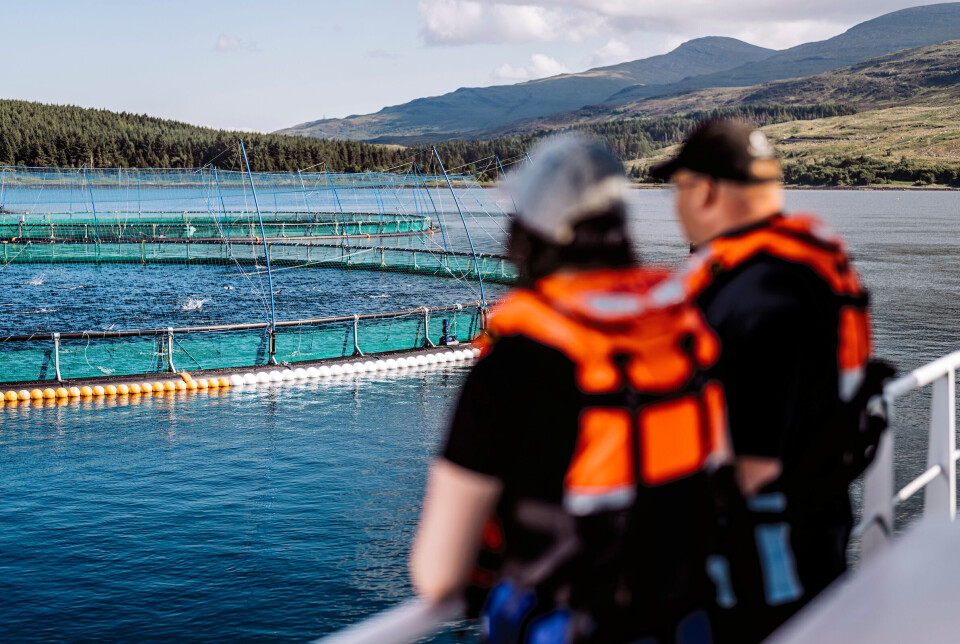
Low salmon prices led to £2m operating loss for Scottish Sea Farms in Q2
Scotland’s second largest salmon farmer, Scottish Sea Farms (SSF), made an operating loss of £2 million (NOK 28m) in the second quarter of the year, due to low salmon prices, co-owner Lerøy Seafood said in its Q2 2025 report today.
SSF harvested 11,642 gutted weight tonnes of salmon in the quarter, a decrease of 5% compared to the 12,235 gwt harvested in the same period last year.
“The biological development in the quarter was good, with the next generation of fish performing well,” wrote Lerøy.
“Due to a significant fall in market prices from salmon and trout, and thus price realisation, EBIT/kg decreased from NOK 19.1 in Q2 2024 to NOK -2.4 in Q2 2025. Harvest volume guidance for 2025 is unchanged at 32,000 gwt due to a planned re-organisation of the site structure. The long-term potential remains significantly higher.”
The number of smolts stocked in marine sites by SSF almost doubled in the first half of this year compared to H1 2024, increasing from 3.5 million to 6.5m.

SSF is owned 50-50 by Lerøy and SalMar, the world’s fourth and second largest Atlantic salmon farmers by volume.
Lerøy Seafood Group (LSG), which also runs a wild catch fish business, made an operating profit of NOK 680m in Q2, including NOK 256m in its Norway fish farming segment, a 67% drop from the NOK 777m in the same period last year despite harvest volume increasing to 48,900 gwt from 36,700 gwt in Q2 2024.
“LSG achieved its highest net growth ever for a second quarter,” said chief executive Henning Beltestad in a press release.
“Survival rates are high, the share of superior quality is high, and the average harvest weight has increased, while cost per kg is declining. This is due to a very strong biological performance. We see a more challenging start to the third quarter, where high sea temperatures in Norway imply increased biological risk. The guided harvest volume of salmon and trout for 2025 remains at 195,000 gwt.”
Low spot prices
Beltestad said low prices for salmon and trout, driven by strong supply growth, impacted results in the quarter, while contracts provided some earnings stability.
“Low spot prices continued into the third quarter,” said the CEO. “In the longer term, the increased supply helps us build markets, for example in China, which is positive for Lerøy, the industry, and Norway as an export nation.
“We continue to perform well in our submerged cages and experience positive effects from changes we have made in genetics and smolt production.”
Good for VAP
Operating profit for LSG’s value-added products (VAP), sales and distribution segment was NOK 351m, its 10th consecutive quarter of EBIT growth.
“This segment, which handles sales and processing of seafood, continues its positive development driven by improved capacity utilisation and strengthened activity towards key customers. We are steadily moving closer to our target of NOK 1,250 million in operational EBIT in this segment for 2025,” said Beltestad.
He concluded by saying he was pleased with the performance in Q2.
“We are delivering on the 2025 key targets communicated at our Capital Markets Day in 2022. We are entering a new strategy period and new targets will be set. I am optimistic about Lerøy’s development going forward. With our business model, we are well positioned, and we have a strong position with strategic customers. There is strong global demand for seafood, and we are gaining market share in important markets,” said the CEO.






















































